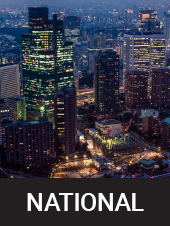Warning: This story deals with disturbing subject matter that may upset and trigger some readers. Discretion is advised.

For as long as she can remember, Colleen Jacob has disliked standing in lines.
It’s not unusual to be frustrated while standing in a long queue of people, but Jacob said she believes there’s something deeper to her disdain for it.
Day after day and meal after meal, she and hundreds of other children were forced to stand in lines while imprisoned at the Kamloops Indian Residential School in Tk’emlúps te Secwépemc territory.
“They lined us up to go eat breakfast. Once we’re done, we go back, get ready for school and then we go line up outside,” she recalled, holding her deer hide drum tightly as she spoke.
“It’s like always lining up on a timed scheduled to go here, go there.”
On Monday, Jacob attended the one-year memorial for Le Estcwicwéy̓ — the missing children — at the Tk’emlúps te Secwépemc Powwow Arbour next to the former residential school grounds. On May 23 last year, the First Nation learned that 215 suspected unmarked graves had been detected there, beneath what was once an apple orchard.
Jacob, who is from Xaxli’p of the St’at’imc Nation, said the heartbreaking news came as a shock. Right away, she made her way to the grounds, acknowledged the ancestors and offered tobacco to the fire.
“As a child, you’re just living, you’re just surviving. I had no idea, you know, the dangers that we had faced.”

Kamloops Indian Residential School was once the largest institution of assimilation in Canada with about 500 children at its peak. It opened under the leadership of the Catholic Church in 1890 and was closed under federal supervision in 1978.

Get breaking National news
Ron Ignace, former chief of the Skeetchestn Indian Band, has spoken frequently about being beaten there as a child for speaking his Secwepemctsin language, and of escaping at the age of 16. Now Canada’s first commissioner of Indigenous languages, he has a sub-office in one of the original office buildings on the school grounds.
“I’ve gone back in there and reclaimed our place in that facility,” he told Global News with a smile, as sandwiches were distributed in the Powwow Arbour during the memorial.
“While I’m a survivor, I think we’ve got to transition from being simply survivors of a residential school to revivors of our culture, our spirit, our nation, and our rightful place in this country.”
Jacob doesn’t think she attended the residential school “during the hardest times.” When she was taken at the age of seven in the 1970s, the federal government had replaced priests and nuns in its operation.
But she will never forget the feeling of having “no control,” she said, of being forcibly separated from her siblings in an unfamiliar place, told to abandon her culture and pick up a Bible.
“I feel like they had full reign over our people and they were able to do anything and everything they wanted to do,” she explained, sharing some of the harrowing abuse her grandmother and mother endured in a residential and day school, respectively.
“You know, all the actions that have happened to our people — it really is genocide.”
Hundreds of people from across the country attended the memorial for Le Estcwicwéy̓, taking part both in a moment of silence for the children, and joyful round dances to celebrate the life, friendship, culture and resilience of Indigenous peoples. There were prize giveaways, jingle dress dancers, speeches, songs, and a grand outdoor feast.
“I think there’s still so much strength in our people,” said Jacob, who travelled to Rome in March as part of a historic delegation of Indigenous peoples to the Vatican to meet Pope Francis.
“It is time for us to tell our story, to be able to reclaim our lives as Indigenous people, because I think for so long the government has tried to control us.”
She brought her nephews, Sampson and Michel, to the ceremony so they could hear the stories of elders, survivors and Le Estcwicwéy̓ firsthand.
“It’s a new time, and I think it’s time for us to start building up our young people, but they also need to know the truth,” she said.
For Ignace and many other Indigenous leaders, elders, survivors and advocates, truth is the first ingredient in reconciliation.
The still-standing Kamloops Indian Residential School may be haunting, but it brings “value” as tangible evidence of the “systemic, colonial, racist policies” thrust upon Indigenous peoples, he explained.
- B.C. business ‘review bombed’ in case of MAGA mistaken identity
- Man accused in botched B.C. dump truck e-bike heist remains behind bars, for now
- Kimberly Proctor’s killer denied day parole but can tour minimum security prison
- ‘A lot of bureaucracy’: Kitsilano homeowner blames city for renovation delays
Adjusting his hat slightly as the drums pounded behind him, Ignace shared something his nation’s elders used to say in Secwepemctsin.
“There are times when our people will wake up and they will show themselves — just like these children have woken up and shown themselves at a crucial time.”
Le Estcwicwéy̓ proved to the world that there was substance to the hurt, sorrow and grief of Indigenous peoples. Now, Ignace said it’s time for all of Canada to get to work, planting seeds where it has previously sewn division.
“What needs to happen has to be not only a reconstruction of our language, but the reconstruction of our family structure of our nations and economics, so we can be true partners of Canada moving forward, building a country that is great and good.”
The Indian Residential Schools Crisis Line (1-866-925-4419) is available 24 hours a day for anyone experiencing pain or distress as a result of their residential school experience.









Comments